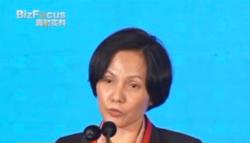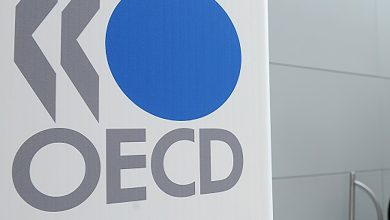China’s attempt to boost demand is stifled by wall of austerity

FINANCE chiefs in Beijing are testing new ways to boost the economy by encouraging demand, breaking with long-established practice as threats to the country’s growth target mount.
The trouble is, this embrace of a more expansionary policy in China’s capital is effectively getting cancelled out in the provinces – where authorities are in full belt-tightening mode.
Beijing allocated a large chunk of proceeds from this year’s special sovereign bond sales to subsidies for households and companies that buy new equipment in an attempt to boost demand – something that never happened before. Previously the favoured way to spur growth was spending on things such as roads, railways or industrial parks, much of it done by provincial governments.
It’s “a signal that policymakers’ focus of easing has been shifted slightly more to the demand side”, said Lisheng Wang, an economist with Goldman Sachs. “The linkage between fiscal spending and infrastructure investment may have weakened to some degree.”
Many economists have been calling for exactly such a shift, arguing that only ramped-up deficit spending – aimed at helping consumption, rather than the country’s powerhouse industries – can pull the economy out of a deflationary trap and ensure it expands at the target rate of around 5 per cent.
Beijing has a chance to unleash more fiscal firepower this week when top legislators gather for one of the final opportunities in 2024 to announce additional bond sales. Officials used a similar meeting last year to tweak the budget mid-year and allow more deficit spending.
BT in your inbox

Start and end each day with the latest news stories and analyses delivered straight to your inbox.
Slowing sales
Still, it’s not clear if the cautious change of direction in the capital is enough to offset what’s happening at the local level. That’s because regional governments, whose spending was once a key driver of growth, are now focused on scaling back their dangerous debt burdens.
China’s provinces are selling new special bonds, which are supposed to be spent on investments expected to generate returns, at the slowest pace since 2021 – falling well short of their quotas, amid a dearth of suitable projects now that the country is saturated with infrastructure.
Meanwhile, they are running short of cash to meet daily spending needs – such as paying salaries – which are funded by tax revenues, as their income gets squeezed by the real estate slump and broader economic slowdown. Many local authorities have resorted to delaying payments to contractors, imposing hefty fines and dinging companies with tax bills that date back for decades.
The moves suggest local governments have become “grabbing hands” in the economy, Nomura Holdings economists including Lu Ting wrote in a note. “This may be the impetus for a second wave of economic shocks that could undermine the foundations of China’s success story.”
In the case of the city of Yueyang in central Hunan province, authorities recently outlined plans to “compress” the size of special bond issuance – and “sell anything that’s not nailed down”.
They are scrambling to comply with President Xi Jinping’s crackdown on so-called “hidden debt” used by China’s regions in the past to stoke growth. The local government financing vehicles that were set up to enable off-balance-sheet borrowing have seen net financing outflow for three straight quarters.
Against this backdrop, Beijing is having to shoulder more of the burden when it comes to driving growth via deficit spending.
In July, the government earmarked nearly one-third of the one trillion yuan (S$183 billion) special bond sale for an existing plan to encourage purchases of greener and smarter equipment. It doubled the subsidy for new-car buyers, now offering up to 20,000 yuan for electric vehicles.
There was an immediate impact: applications jumped some 24 per cent in the second half of August as the programme was rolled out nationally. The plan could drive consumption and investment worth some 1.5 per cent of gross domestic product, according to Bloomberg Economics estimates.
There are plenty of ideas floating around for more sustainable ways to shore up consumption – such as beefing up China’s social safety net, improving public services for migrant workers, or encouraging childbirth with financial aid as the population shrinks.
But right now, overall public spending – which includes local governments – is shrinking, not growing. It contracted about 2 per cent in the first seven months of 2024.
“Fiscal policy must strengthen to stabilise the economy,” said Jia Kang, a former head of a research institute under the Ministry of Finance. “Either a budget deficit raise or extra special sovereign bond sales should be considered this year.”
Differing objectives
Along with a potential boost to central government outlays, there are also signs that Beijing may be easing some of the restrictions on how the provinces can borrow and spend.
For example, authorities are mulling letting local governments sell special bonds to buy unsold homes – as part of an effort to halt a property market collapse that’s left developers deep in crisis.
Some economists argue that Beijing should use its own borrowing to transfer more cash to local authorities – helping to ease their budget crunch and repair balance sheets – instead of spending it on inefficient stimulus such as traditional infrastructure.
“Top leaders consider more than just economic growth,” said Jacqueline Rong, chief China economist at BNP Paribas. “Security and risk prevention are two other big concerns, and it’s very challenging to strike a balance between the three.” BLOOMBERG





